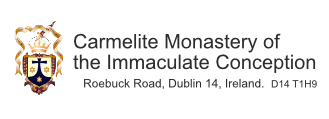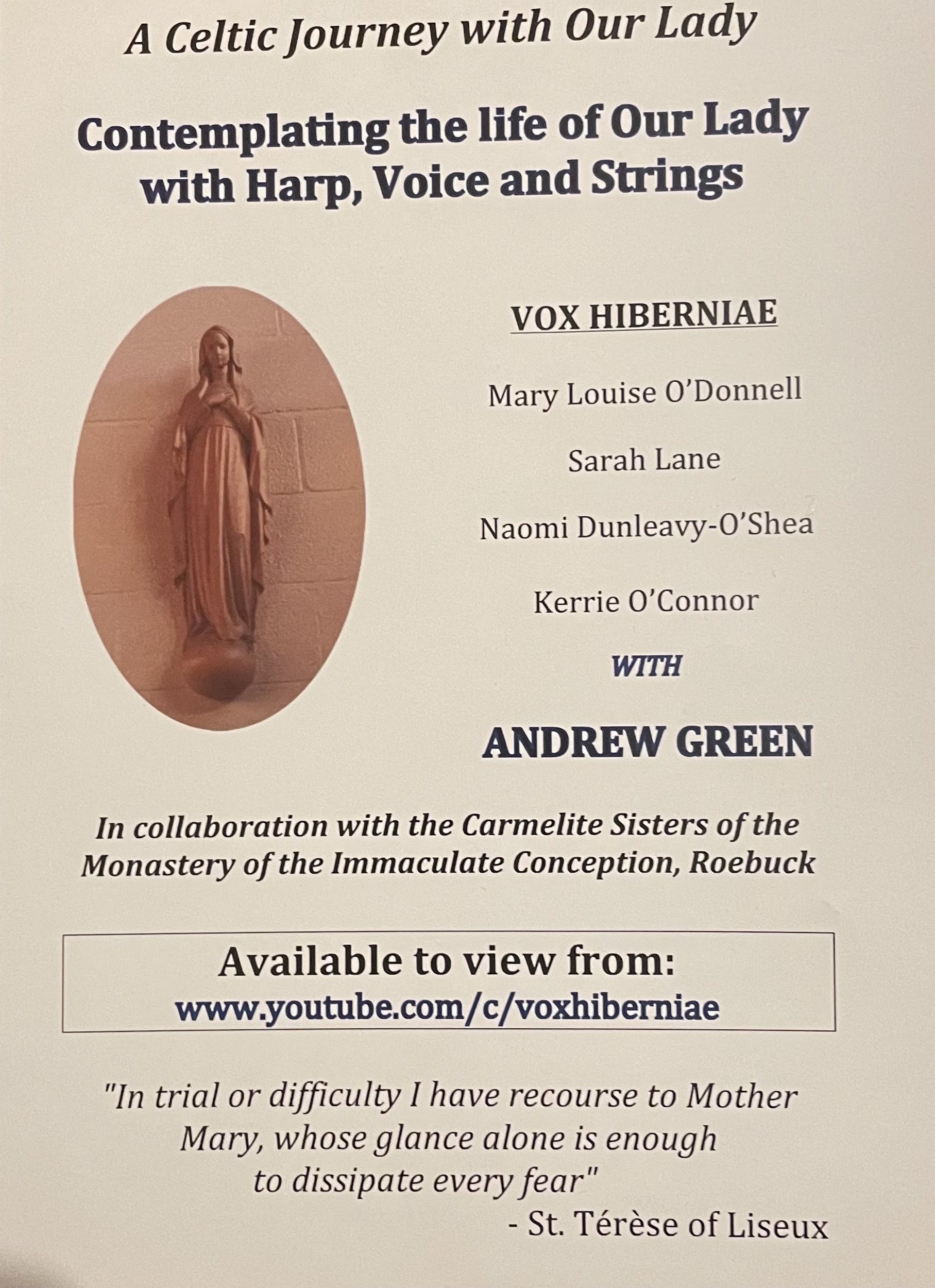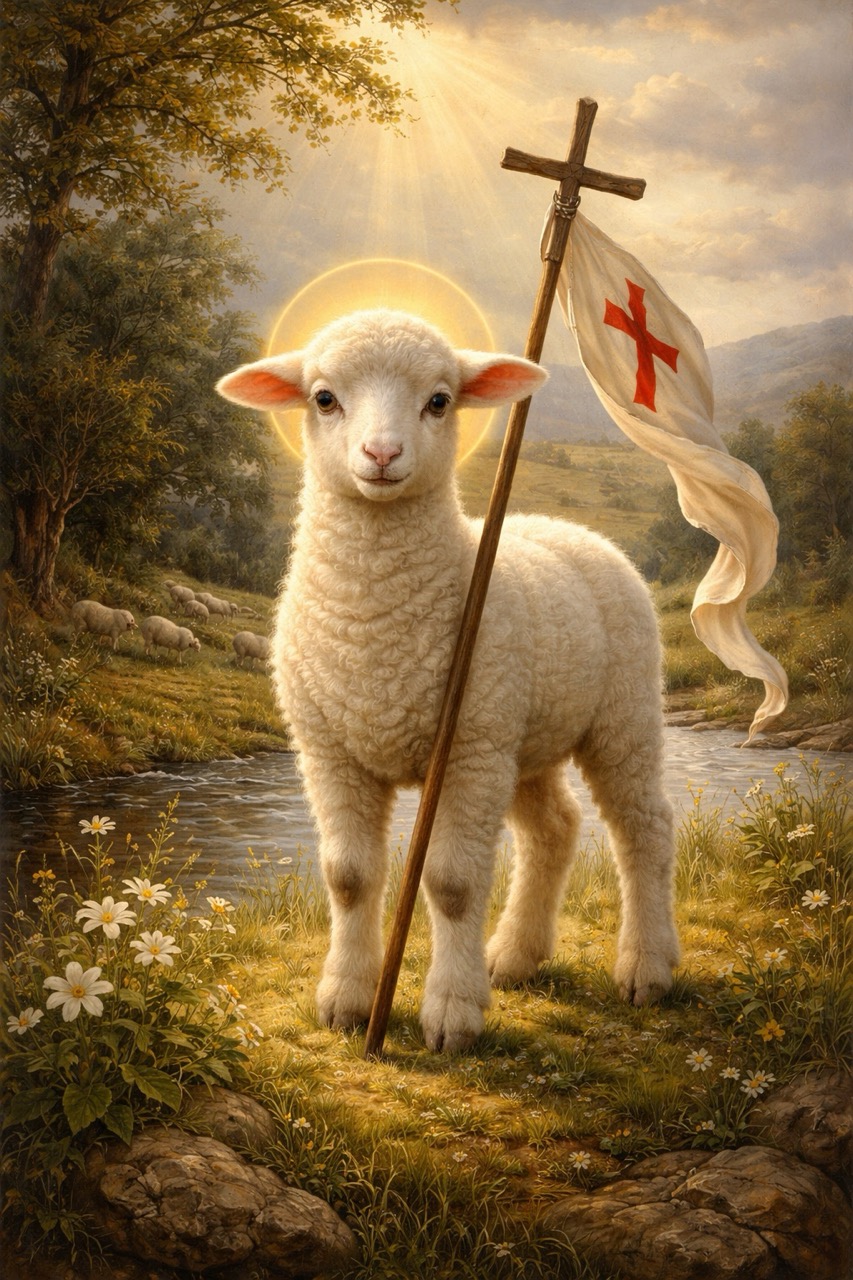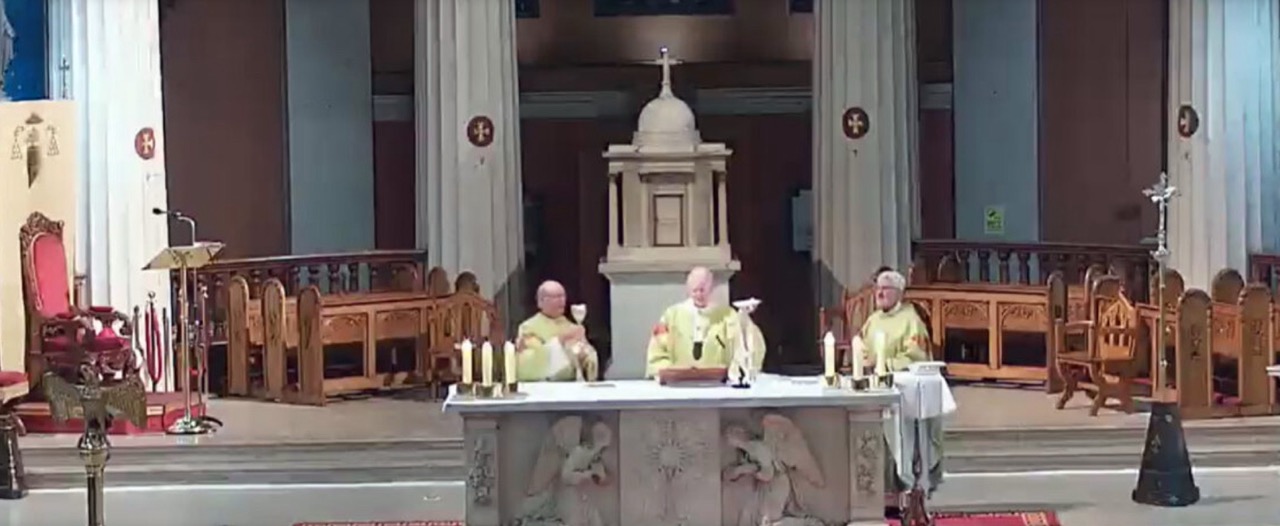Christmas 2025
A Christmas Prayer
Merry Christmas to all our Friends
Christmas Newsletter 2025
Dear Friends,
Advent is fast approaching and we would like to share our usual yearly news with you. We have been busy these last weeks doing a bit of tidying and cleaning in preparation for Christmas and the quiet time of Advent as we await the birth of our Saviour.
As we approached Advent last year, we had the good news that Sr Teresita had been awarded her Irish citizenship and she was to be conferred on 2nd December in Killarney. Great was her excitement that she would see Kerry and it took a three-day journey to head south. The day itself and a day either side for travel. Sr Teresa happily accompanied her and they set out after Mass on Sunday. Next day they joined the three thousand people being conferred with Irish Citizenship, from all walks of life, from all over the world and all happy to be Irish. We met several other Religious who were conferred on the same day. Next day there were three thousand more people. Unfortunately, there are not many daylight hours in December so viewing the County was limited. On the way home we broke the journey in Barack Obama Plaza and great was the excitement of our new citizen when she discovered the Moo Parlour and had to taste all the flavours!!
On arriving home we were greeted by Papal bunting, Irish and Peruvian flags and balloons galore and the party started!
More excitement when she received her first voting card this year and was first out on the day to cast her vote having first made extensive enquiries as to the candidates’ suitability!!
Continue Reading - Christmas Newsletter 2025
Abide in His Love Women's Conference
21st to 23rd November 2025 in Bundoran, Co. Donegal
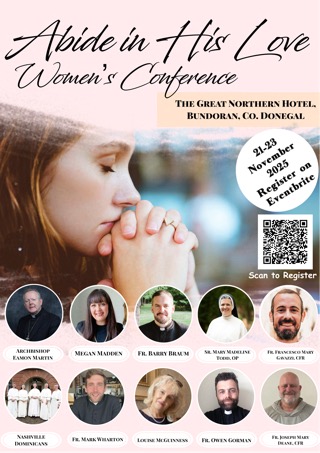
Our Lady of Mount Carmel
Feast Day 16th July
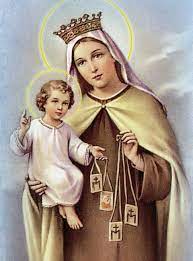 When Jesus wanted to teach his disciples he often took up the position of many religious teachers of Israel, that is, He went up to a high place. Jesus sat down when he wanted to teach like all the wise people of his time, a practice that is part of the ceremony of doctrinal teaching even to this day. One of the real milestones of the ministry of Jesus was when “He went up the mountain …. sat down …. And began to teach them ….” He taught them the Beatitudes, the charter of living for disciples; “Blessed are the poor … Blessed are the pure in heart … Blessed are you when you suffer for my sake ….” (Matt 5:1-12)
When Jesus wanted to teach his disciples he often took up the position of many religious teachers of Israel, that is, He went up to a high place. Jesus sat down when he wanted to teach like all the wise people of his time, a practice that is part of the ceremony of doctrinal teaching even to this day. One of the real milestones of the ministry of Jesus was when “He went up the mountain …. sat down …. And began to teach them ….” He taught them the Beatitudes, the charter of living for disciples; “Blessed are the poor … Blessed are the pure in heart … Blessed are you when you suffer for my sake ….” (Matt 5:1-12)
Mountains are pivotal in the ministry of Jesus - from the mountain on which the devil offers him power over the entire world to the mountain where he hands over power to his disciples, the power he has received from the Father. Jesus was drawn to mountains; places where our faith was founded; where our law was received; where prophets had lived and sacrifices were offered. There are about 500 mentions of mountains in the Sacred Scriptures and there are 7 significant mountains.
Today we turn to Mount Carmel, the Holy Mountain in Egypt regarded as a ‘high place’ where idols were worshipped: the scene of Elijah’s confrontation with the 400 false prophets of Baal. This is the mountain to which Berthold (mid 13thcentury) led his followers to live in caves in imitation of Elijah: where mysteriously they dedicated their chapel to Mary, the Mother of God. This is where the Holy Order of Carmelites found its origin and its name.
Throughout the Gospels, mountains play a big part in the life and ministry of Jesus. Mountains represent lofty events, the highest ideals and the Presence of the Transcendent God. The Lord chose to reveal himself as God to the three closest disciples on Mount Tabor; the Lord went in distress to the Mount of Gethsemane; the Lord died on Mount Calvary; the Lord ascended to the Father from the Mount of Olives.
Mountains are places of Solitude and Prayer, of Contemplation and encounters with God. By climbing them, we are reminded of our struggle; by their remoteness they provide us with solitude and, yes, by their sheer height they seem to bring us closer to God! Whatever happens on a mountain stands out! A chapel on a mountain dedicated to Mary speaks to hearts freed from the distractions of the world.
Though Mount Calvary can conjure up less happy sentiments, it was on this mountain that Mary was given to us, as our mother. She had climbed many mountains in her life’s journey and courageously and generously travelled into the Hill Country as carer and proclaimer of the Good News.
On the Mountain of Calvary she stretches out her arms to embrace us, her new children. But it is to Mount Carmel that we turn today to honour her. Let us dwell a while on this Holy Mountain to be with her. Let us consider her sufferings and join our much lesser sufferings to hers. Let us be open to the affection and protection that she gives to us. Let us marvel once more that the Lord has told us truly “This is your Mother”. With her we praise the Lord from the height of Mount Carmel saying indeed “Holy is His name”.
Saint Brigid (454-524)
Secondary Patron of Ireland
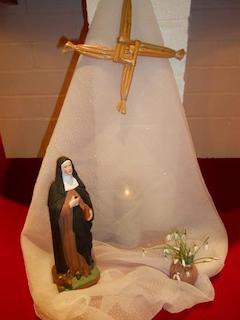 St Brigid, who is known as ‘Mary of the Gael’, is renowned for her hospitality, almsgiving and care of the sick. When she was young her father wished to make a very suitable marriage for her but she insisted in consecrating her virginity to God. She received the veil and spiritual formation probably from St Mel and stayed for a period under his direction in Ardagh. Others followed her example and this led her to found a monastery in Kildare with the assistance of Bishop Conleth. She was the first abbess of a religious community in Ireland and had a very special place in the Irish Church of her time. She died in 524 and her cult is widespread not only throughout Ireland but in several European lands.
St Brigid, who is known as ‘Mary of the Gael’, is renowned for her hospitality, almsgiving and care of the sick. When she was young her father wished to make a very suitable marriage for her but she insisted in consecrating her virginity to God. She received the veil and spiritual formation probably from St Mel and stayed for a period under his direction in Ardagh. Others followed her example and this led her to found a monastery in Kildare with the assistance of Bishop Conleth. She was the first abbess of a religious community in Ireland and had a very special place in the Irish Church of her time. She died in 524 and her cult is widespread not only throughout Ireland but in several European lands.
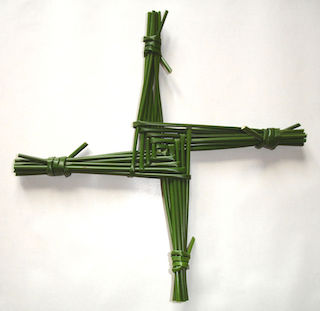
St Brigid’s Cross
May the blessing of God
The blessings of Our Lady
The blessing of St Brigid
Be upon everyone
Who looks upon this Cross.
Wishing you all a very Happy and Peaceful New Year
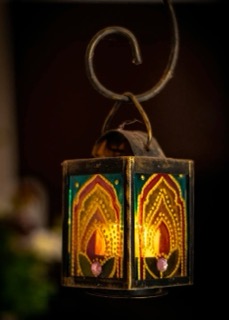 I said to the man
I said to the man
who stood at the gate of the year:
"Give me a light
that I may tread safely into the unknown".
And he replied:
"Go out into the darkness
and put your hand into the Hand of God,
and that shall be to you
better than light
and safer than a known way".
Minnie Louise Haskins
Christmas Night 2024
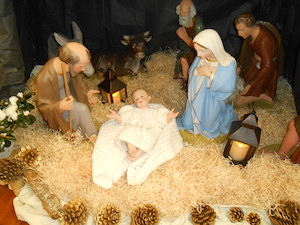
Of course, understanding of the nature of the Messiah was very not clear but Isaiah presented different titles for this Messiah, titles which were attractive and relevant to a people lost and in need of a Saviour. The titles given to the one who was to come were many but the ones we know best are; ‘Wisdom’, ‘Adonai’, Stock of Jesse’, ‘Key of David’, ‘Rising Sun’, ‘King of the peoples’ and ‘Emmanuel’.
Over the last two thousand years Christians have iterated the longings that the Israelites had and even today the Faith and Prayers of our brothers and sisters of the Jewish faith are looking for the signs of the Saviour to come.
For over twelve centuries these titles of the Messiah have been used in the liturgical prayer of the Church when we place an ‘O’ before them and address the title as a person. The ‘O’ antiphons for us address the person of Jesus. Each is based on the prophecy of Isaiah.
Wisdom. O holy Wisdom, you govern all creation. Give us the spirit of wisdom and of understanding (Is 11:2-3)
Adonai. O sacred Lord who showed yourself to Moses and gave him the Law, stretch out your hand and lead us to obey you commands. (Is 3:1-8)
Stock of Jesse. O Blossom from the root of Jesse who will become great, do not delay anymore come to rule us. (Is 11:1)
Key of David. O key of David, what you open no one can close again. Come to free us and open the door to heaven. (Is 42:6-7)
Rising Sun. O Radiant Dawn shine on those who live in darkness and the shadow of death. Let your great light shine on us. (Is 9:1-2)
King of all Nations. O King, keystone of the human race, make us all one, bind us together. Turn swords into ploughshares. (Is 28:16)
Emmanuel. O Emmanuel, King and Lawgiver, come and be with us, set us free. (Is 7:14)
In many ways the struggles of people in those days of Isaiah resembled those of our own time. There were corrupt leaders, there was exile and injustice and political intrigue. Isaiah’s poetry and writing and vision gave real hope to a people sincere in their search for a saviour and in their devotion to God.
The saviour who was foretold by Isaiah would come from God, would be one of themselves, would be born of a young woman, he would be a light in darkness and a leader with majestic stature. But, they hardly had any understanding of what ‘Emmanuel’ could mean.
Because we, Christians, have been blessed with Faith and the gifts of the Holy Spirit, we are able to understand, commemorate and celebrate the reality of ‘Emmanuel’. God-is-with-us.
The WORD who was with God from the Beginning was God.
That Word has become flesh, has become one of us and is living with us. (John 1:1-18)
The prophecy of Isaiah and the Prayer of the ‘O’ antiphons have been fulfilled;
Emmanuel , king and lawgiver, desire of the nations, Saviour of all peoples has come and set us free.
Glory to God in the highest heaven, and peace to people who enjoy his favour.
Christmas Newsletter 2024
Dear Friends,
Come let us adore Him who is Christ the Lord. As we enter Advent to prepare for His coming at Christmas we are painfully aware of so much pain in the world, caused by war and violence and indeed natural disasters caused by humankind’s inhumanity to each other. The suffering in Ukraine and Russia and elsewhere drags on and we are especially aware of the trouble in the Middle East through our friendship with the Carmels there. Our fervent prayer is for an end to the violence and the restoration of peace. Peace is what the Angels sang on Christmas night and how our world longs for that peace.
Continue Reading - Christmas Newsletter 2024
4th Sunday of Advent
3rd Sunday of Advent
2nd Sunday of Advent
1st Sunday of Advent
Encyclical Letter
DILEXIT NOS
Of THE HOLY FATHER
FRANCIS
On The Human and Divine Love
Of the Heart of JESUS CHRIST
If you want to read the full encyclical click on the link Dilexit Nos
Also
Archbishop Martin reflects on Pope Francis’ new encyclical ‘Dilexit Nos’
St Teresa of Avila, 1515 - 1582
15th October
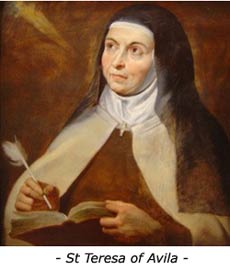 The Carmelite Monastery of the Incarnation, Avila, was home to some 150 nuns when it opened its door to receive the twenty year-old Teresa. Happiness became her lot despite sickness and an inner struggle lasting twenty years. Loving and lovable by nature, Teresa’s capacity for friendship received a new impetus when she realisd twenty years later that Christ himself was her true friend. This relationship was the foundation of her prayer. Friendship demands intimacy – a small group of praying women, devoted to Christ and his mother Mary, living simply as sisters and in friendship; a modest secluded property but hearts open to the concerns of Christ – this was the vision of Teresa and her friends. St Joseph’s, Avila is that reality still today and in over 800 other locations worldwide.
The Carmelite Monastery of the Incarnation, Avila, was home to some 150 nuns when it opened its door to receive the twenty year-old Teresa. Happiness became her lot despite sickness and an inner struggle lasting twenty years. Loving and lovable by nature, Teresa’s capacity for friendship received a new impetus when she realisd twenty years later that Christ himself was her true friend. This relationship was the foundation of her prayer. Friendship demands intimacy – a small group of praying women, devoted to Christ and his mother Mary, living simply as sisters and in friendship; a modest secluded property but hearts open to the concerns of Christ – this was the vision of Teresa and her friends. St Joseph’s, Avila is that reality still today and in over 800 other locations worldwide.
Teresa died in Alba de Tormes in 1582. Canonized in 1622, she became in 1970, together with Catherine of Siena, one of the first two women Doctors of the Church in recognition of the wisdom of her life and her teachings. Her autobiography and letters are widely available. The Way of Perfection and the Interior Castle contain much on prayer.
Feast of Saint Thérèse of the Child Jesus
(Little Flower) - 1st October
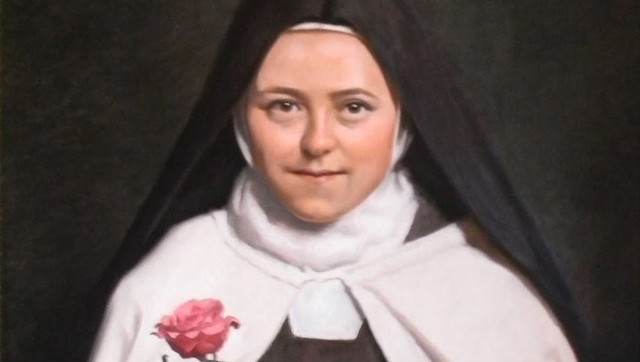 Saints during my childhood years; St Anthony, Blessed Martin and the Little Flower. We had statues, holy pictures of the saints, but of the Little Flower there was a photograph! Somehow that made her more real, more like one of ourselves. Since then I and all of us have seen several photos of St Therese of Lisieux.
Saints during my childhood years; St Anthony, Blessed Martin and the Little Flower. We had statues, holy pictures of the saints, but of the Little Flower there was a photograph! Somehow that made her more real, more like one of ourselves. Since then I and all of us have seen several photos of St Therese of Lisieux.
The one of her dressed in her Carmelite habit is the most familiar. She is perhaps the most famous Carmelite of all time. The Carmelites take their name from the Holy Mountain of Carmel in Israel. It is a beautiful place, the word Carmel means ‘GARDEN LAND’: a place of beauty, order, colour where things grow and blossom. It is a place where God can seem so near and it is a place where Carmelites feel at home and can blossom – like flowers – little flowers!
So, when we see Therese in her Carmelite habit we are assured once more that she is praying for us, for the Church and the World. The vocation of the Carmelites is to support us by their prayers.
There is another photo of Therese which shows her as a little girl of about four years of age. It is an image of innocence and beauty and lovability. It is all the more poignant when we learn that it was taken around the time of her mother’s death. Her childish innocence comes through when we hear from her that when her mother died she asked her big sister would she be her mother from then on. This innocence and simplicity was to be the hallmark of her character throughout her short life. “I rejoice to be little because only children and those who are like them will be admitted to the heavenly banquet.”
My favourite picture of her is the one of her as a beautiful young woman of fifteen and half years. She has dressed-up for her important meeting with the bishop – she wanted to make an impression so that he would allow her to join the Carmel. Here she looks like a princess, radiant and beautiful, attractive and lovable.
This is a real woman. This woman is human. This is a woman with whom we can identify, even compare ourselves to her.
Saint Therese of Lisieux became a saint long before she entered Carmel. Her saintliness started when she learned God worked in her family, in her village, in her own understanding and in her emotions and feelings. It was through the grace of God that she recognised God’s call to her, it was through the grace of God that she pursued the call to Carmel, it was God who gave her the courage and strength needed to leave her home and wonderful family to join an enclosed community of Carmelite nuns.
For many of us it is in her suffering and pain that we can best identify with her. We will never attain to such acceptance of suffering as she did, but she shows us that it is possible, she leads us to accept that life is one of pain and she is a beacon for us that God sustains us and strengthens us in our weakest moments.
Today we remember her in a similar way to how we remember our loved ones on the anniversary of their deaths. We feel a closeness to her and can almost remember her as a reality in our lives. We give God praise and thanks for the power of the Spirit as seen in her life – it’s like we actually knew her. So, we call to mind the important things about her.
We remember how God has blessed the lives of so many people through the memory and intercession of St Therese. She “understood that love was everything; that it embraced all times and places; that it was eternal”. She discovered, early on, that her vocation in this life was to love and when she knew that she was dying, she prayed that she “could spend her heaven doing good on earth”.
“I am perfectly sure that I shall not stay inactive in Heaven, my desire is to go on working for the Church and for souls. That is what I keep asking God, and I am certain that God will say yes”. That is her promise to us.
Her example to us is, as one who was close to God and kept close to God through prayer. Once she was asked how she spent the hours she did in front of the Blessed Sacrament. Her answer was “I just sit there noticing God, noticing me”.
Her assurance to us is “Look into the Face of Jesus … There you will see how much He loves you”
Archdiocese of Dublin
Safeguarding Day 2024
Read the Homily of Archbishop Dermot Farrell
Saint Teresa Benedicta of the Cross OCD
(Edith Stein) Feastday 9th August
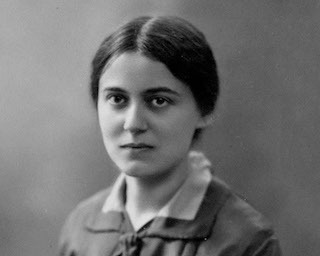 At her canonisation in 1998, Pope John Paul II said “Edith Stein liked freedom. She broke away from her family ties. She even “consciously and deliberately stopped praying” at the age of 14. She always wanted to make her own decisions; … family, school, college, career, working as a nurse, friends …. And yet, at the end of a long journey, she came to the surprising realization: only those who commit themselves to the love of Christ become truly free”
At her canonisation in 1998, Pope John Paul II said “Edith Stein liked freedom. She broke away from her family ties. She even “consciously and deliberately stopped praying” at the age of 14. She always wanted to make her own decisions; … family, school, college, career, working as a nurse, friends …. And yet, at the end of a long journey, she came to the surprising realization: only those who commit themselves to the love of Christ become truly free”
Edith Stein was born in Breslau on 12th October 1891, the youngest of 11 in a Jewish family. Her father died when she was 2 years old. Her mother, who had to work very hard to bring up the family, did not succeed in keeping up the faith of the children. Edith lost her Faith in God and, as Pope John Paul quoted from her, “I consciously decided, of my own volition to give up praying”
At University she studied Philosophy and women’s issues. She became a renowned philosopher and associated with a very academic set of people and, as she wrote later, during her first years at University, she was a radical suffragette. On several occasions during her studies she unwittingly came upon evidence of the value of Christian Philosophy but carefully avoided becoming involved.
One day, during her time lecturing at Freiburg University she happened to notice a woman with her shopping bag going into the Cathedral at Frankfurt and kneeling to pray. “This was something totally new to me. In synagogues and Protestant churches people went for services only. Here someone was going as if to have an intimate conversation. This was something I never forgot”. This simple, ‘everything day’ thing struck a chord with her.
Then in 1917 a friend of hers was killed in action and she went to visit his widow who had converted to Protestantism. She felt uneasy at first, but was surprised when she actually met with a woman of faith. “This was my first encounter with the Cross and the divine power it imparts to those who bear it …it was the moment when my unbelief collapsed and Christ began to shine his light on me – Christ in the mystery of the Cross”.
The next year she gave up her job as a lecturer and after reading the New Testament, Kierkegaard and St Ignatius Loyola she felt that one could not just read books like this, but had to put something of what was found in them into practice. She then read St Teresa of Avila. “When I finished the book, I said to myself: This is the truth”. Later she wrote: “My longing for truth was a single prayer.”
Edith Stein was baptised a Catholic on January 1st 1922. She then went back teaching and writing. She studied Cardinal Newman’s diaries as well as other great theologians and eventually accepted a lectureship at the University of Munster. She had found a way of leading people to God. War broke out in 1933. It became impossible for her to continue teaching and leading people to God. “I had become a stranger in the world”.
She entered the Carmelite Convent on 14th October 1933. She didn’t consider that she was abandoning her family and friends; “Those who join the Carmelite Order are not lost to their near and dear ones, but have been won for them, because it is our vocation to intercede with God for everyone”.
When she made her religious profession on 21 April 1935 she took the name Teresa Benedicta of the Cross.
When the anti-Semitism of the Nazis became apparent, the nuns of the convent smuggled Teresa to the Netherlands. She wrote her will; ”Even now I accept the death that God has prepared for me. I ask the Lord to accept my life and my death”. She was arrested by the Gestapo on 2nd August 1942 and deported to Auschwitz. The last words she spoke as she left the convent with her sister were; “Come Rosa, we are going for our people”
Edith Stein, Sister Teresa Benedicta of the Cross, with her sister, Rosa, were executed by gassing at Auschwitz concentration camp on 9th August 1942.
Pope John Paul profoundly summed up the life of this extraordinary woman
“A daughter of Israel, who, as a Catholic during Nazi persecution, remained faithful to the crucified Lord Jesus Christ and, as a Jew, to her people in loving faithfulness”.
Our Lady of Mount Carmel
Feast Day 16th July
 When Jesus wanted to each his disciples he often took up the position of many religious teachers of Israel, that is, He went up to a high place. Jesus sat down when he wanted to teach like all the wise people of his time, a practice that is part of the ceremony of doctrinal teaching even to this day. One of the real milestones of the ministry of Jesus was when “He went up the mountain …. sat down …. And began to teach them ….” He taught them the Beatitudes, the charter of living for disciples; “Blessed are the poor … Blessed are the pure in heart … Blessed are you when you suffer for my sake ….” (Matt 5:1-12)
When Jesus wanted to each his disciples he often took up the position of many religious teachers of Israel, that is, He went up to a high place. Jesus sat down when he wanted to teach like all the wise people of his time, a practice that is part of the ceremony of doctrinal teaching even to this day. One of the real milestones of the ministry of Jesus was when “He went up the mountain …. sat down …. And began to teach them ….” He taught them the Beatitudes, the charter of living for disciples; “Blessed are the poor … Blessed are the pure in heart … Blessed are you when you suffer for my sake ….” (Matt 5:1-12)
Mountains are pivotal in the ministry of Jesus - from the mountain on which the devil offers him power over the entire world to the mountain where he hands over power to his disciples, the power he has received from the Father. Jesus was drawn to mountains; places where our faith was founded; where our law was received; where prophets had lived and sacrifices were offered. There are about 500 mentions of mountains in the Sacred Scriptures and there are 7 significant mountains.
Today we turn to Mount Carmel, the Holy Mountain in Egypt regarded as a ‘high place’ where idols were worshipped: the scene of Elijah’s confrontation with the 400 false prophets of Baal. This is the mountain to which Berthold (mid 13thcentury) led his followers to live in caves in imitation of Elijah: where mysteriously they dedicated their chapel to Mary, the Mother of God. This is where the Holy Order of Carmelites found its origin and its name.
Our Lady, Mother of the Church
Feast day Monday after Pentecost Sunday

Prayer to Our Lady, Mother of the Church
Mother, help our faith!
Open our ears to hear God’s word and to recognize his voice and call.
Awaken in us a desire to follow in his footsteps, to go forth from our own land and to receive his promise.
Help us to be touched by his love, that we may touch him in faith.
Help us to entrust ourselves fully to him and to believe in his love, especially at times of trial, beneath the shadow of the cross, when our faith is called to mature.
Sow in our faith the joy of the Risen One.
Remind us that those who believe are never alone.
Teach us to see all things with the eyes of Jesus, that he may be light for our path. And may this light of faith always increase in us, until the dawn of that undying day which is Christ himself, your Son, our Lord!
Easter Sunday
Happy St. Patrick's Day
2024
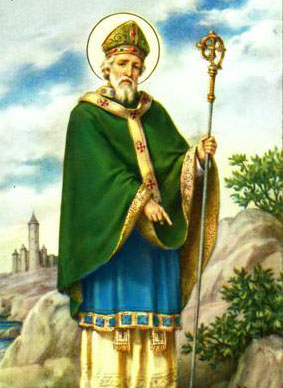
…Before dawn I used to arouse myself to prayer in snow and frost and rain… (Confessions)
Like some other notable persons in the history of Ireland, Patrick was not a native by birth nor by descent. Indeed, he had no natural motive to love the country, since he had passed his youth there as a slave in cold and hunger. In later life he wrote of himself as an exile among aliens and barbarians.
But in those years of privation, he was saved from religious indifference; he learned patience, and through prayer came to the love of God. In retrospect he understood this period was a mark of divine mercy and protection.
After his escape, he knew he was being led along a way of wider significance than his personal holiness, and that his vocation was to bring the gospel to the land of his captivity. The overriding inspiration in leaving his kin and all he held dear and come among a foreign people to make them his own, was the love of God and a grateful desire to serve the divine Master; God, he said in a striking metaphor, had found him as a stone in the mire, had raised him aloft, and set him atop the wall. He felt he must return thanks for so great a favour.
In his life Patrick had to endure disappointment, humiliations, opposition and threats; he was always aware of his inadequacy and lack of education. Yet, one who could win over rulers and maintain good relations with both sides of warring factions needs wisdom and prudence together with an ease of manner among traits of character. With a single-minded pursuit of his aim, he was ready for any toil and to bear all difficulties and hardships.
Patrick's mission reminds us that we owe our faith and most cherished ideals to the labours of others, the care and example of parents and the dedication of teachers.
Our Christian calling has not been through influence or position in society. To bring Christ to the world God can choose weak and defective agents without obvious reason for self-confidence. We may catch an echo of Paul's thought on the role of preachers in Patrick's words: “...if I did or said anything, however small, according to God's good pleasure...let this be your conclusion, and let it be so thought that it was the gift of God.”
Mother’s Day
Sunday 10th March 2024
 We Carmelite Sisters at Roebuck are remembering all Mothers at this time. May you have a joy filled day. All are in our prayers especially Mothers fleeing Ukraine, leaving family behind to protect others, and all Mothers throughout the world who are in pain and suffering. Our prayers are with you. May you experience God’s loving presence and the closeness of Our Lady.
We Carmelite Sisters at Roebuck are remembering all Mothers at this time. May you have a joy filled day. All are in our prayers especially Mothers fleeing Ukraine, leaving family behind to protect others, and all Mothers throughout the world who are in pain and suffering. Our prayers are with you. May you experience God’s loving presence and the closeness of Our Lady.
Saint Brigid (454-524)
Patroness of Ireland
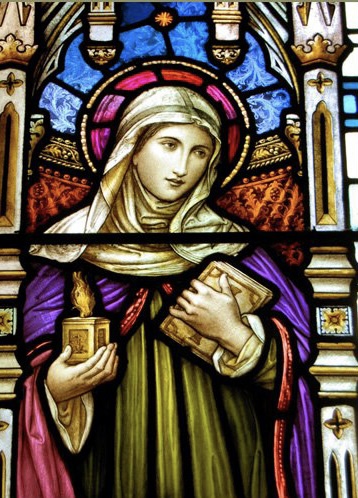
St Brigid, who is known as ‘Mary of the Gael’, is renowned for her hospitality, almsgiving and care of the sick. When she was young her father wished to make a very suitable marriage for her but she insisted in consecrating her virginity to God. She received the veil and spiritual formation probably from St Mel and stayed for a period under his direction in Ardagh. Others followed her example and this led her to found a monastery in Kildare with the assistance of Bishop Conleth. She was the first abbess of a religious community in Ireland and had a very special place in the Irish Church of her time. She died in 524 and her cult is widespread not only throughout Ireland but in several European lands.

St Brigid’s Cross
May the blessing of God
The blessings of Our Lady
The blessing of St Brigid
Be upon everyone
Who looks upon this Cross.
More information about St Brigid
Sr. Breda McInerney (1935-2024)
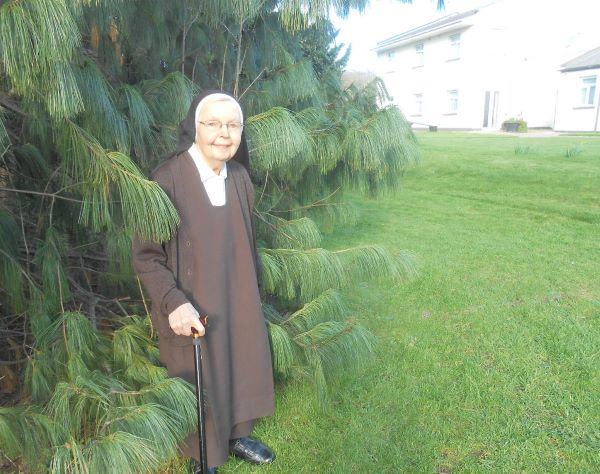
It is with great sadness that we announce the death of Sr Breda McInerney.
Born on 1st February 1935 at Cooraclare, Co Clare. Breda joined the Nazareth Sisters after her secondary school years and taught in their schools in Australia until she decided to be a Carmelite. In 1985 Sr. Breda came to Ireland and joined Firhouse Carmel.
Sr Breda was always interested in people and their concerns and was very zealous in her prayer for all. We are confident that she will continue to bring our concerns to the Lord on our behalf and that she will intercede for us all.
In 2017 she transferred to Roebuck after the sad closure of Firhouse.
Always interested in sport she was an avid follower of the GAA and was keenly interested in rugby.
After suffering for years with heart problems it finally gave up on her and she died peacefully and serenely in the Monastery aided by the wonderful care of our doctors and the hospice nurses.
May she rest in eternal peace.
St Teresa of Avila
1515 - 1582
 The Carmelite Monastery of the Incarnation, Avila, was home to some 150 nuns when it opened its door to receive the twenty year-old Teresa. Happiness became her lot despite sickness and an inner struggle lasting twenty years. Loving and lovable by nature, Teresa’s capacity for friendship received a new impetus when she realisd twenty years later that Christ himself was her true friend. This relationship was the foundation of her prayer. Friendship demands intimacy – a small group of praying women, devoted to Christ and his mother Mary, living simply as sisters and in friendship; a modest secluded property but hearts open to the concerns of Christ – this was the vision of Teresa and her friends. St Joseph’s, Avila is that reality still today and in over 800 other locations worldwide.
The Carmelite Monastery of the Incarnation, Avila, was home to some 150 nuns when it opened its door to receive the twenty year-old Teresa. Happiness became her lot despite sickness and an inner struggle lasting twenty years. Loving and lovable by nature, Teresa’s capacity for friendship received a new impetus when she realisd twenty years later that Christ himself was her true friend. This relationship was the foundation of her prayer. Friendship demands intimacy – a small group of praying women, devoted to Christ and his mother Mary, living simply as sisters and in friendship; a modest secluded property but hearts open to the concerns of Christ – this was the vision of Teresa and her friends. St Joseph’s, Avila is that reality still today and in over 800 other locations worldwide.
Teresa died in Alba de Tormes in 1582. Canonized in 1622, she became in 1970, together with Catherine of Siena, one of the first two women Doctors of the Church in recognition of the wisdom of her life and her teachings. Her autobiography and letters are widely available. The Way of Perfection and the Interior Castle contain much on prayer.
Our Lady of Mount Carmel
Feast Day 16th July
 When Jesus wanted to teach his disciples he often took up the position of many religious teachers of Israel, that is, He went up to a high place. Jesus sat down when he wanted to teach like all the wise people of his time, a practice that is part of the ceremony of doctrinal teaching even to this day. One of the real milestones of the ministry of Jesus was when “He went up the mountain …. sat down …. And began to teach them ….” He taught them the Beatitudes, the charter of living for disciples; “Blessed are the poor … Blessed are the pure in heart … Blessed are you when you suffer for my sake ….” (Matt 5:1-12)
When Jesus wanted to teach his disciples he often took up the position of many religious teachers of Israel, that is, He went up to a high place. Jesus sat down when he wanted to teach like all the wise people of his time, a practice that is part of the ceremony of doctrinal teaching even to this day. One of the real milestones of the ministry of Jesus was when “He went up the mountain …. sat down …. And began to teach them ….” He taught them the Beatitudes, the charter of living for disciples; “Blessed are the poor … Blessed are the pure in heart … Blessed are you when you suffer for my sake ….” (Matt 5:1-12)
Mountains are pivotal in the ministry of Jesus - from the mountain on which the devil offers him power over the entire world to the mountain where he hands over power to his disciples, the power he has received from the Father. Jesus was drawn to mountains; places where our faith was founded; where our law was received; where prophets had lived and sacrifices were offered. There are about 500 mentions of mountains in the Sacred Scriptures and there are 7 significant mountains.
Today we turn to Mount Carmel, the Holy Mountain in Egypt regarded as a ‘high place’ where idols were worshipped: the scene of Elijah’s confrontation with the 400 false prophets of Baal. This is the mountain to which Berthold (mid 13thcentury) led his followers to live in caves in imitation of Elijah: where mysteriously they dedicated their chapel to Mary, the Mother of God. This is where the Holy Order of Carmelites found its origin and its name.
Throughout the Gospels, mountains play a big part in the life and ministry of Jesus. Mountains represent lofty events, the highest ideals and the Presence of the Transcendent God. The Lord chose to reveal himself as God to the three closest disciples on Mount Tabor; the Lord went in distress to the Mount of Gethsemane; the Lord died on Mount Calvary; the Lord ascended to the Father from the Mount of Olives.
Mountains are places of Solitude and Prayer, of Contemplation and encounters with God. By climbing them, we are reminded of our struggle; by their remoteness they provide us with solitude and, yes, by their sheer height they seem to bring us closer to God! Whatever happens on a mountain stands out! A chapel on a mountain dedicated to Mary speaks to hearts freed from the distractions of the world.
Though Mount Calvary can conjure up less happy sentiments, it was on this mountain that Mary was given to us, as our mother. She had climbed many mountains in her life’s journey and courageously and generously travelled into the Hill Country as carer and proclaimer of the Good News.
On the Mountain of Calvary she stretches out her arms to embrace us, her new children. But it is to Mount Carmel that we turn today to honour her. Let us dwell a while on this Holy Mountain to be with her. Let us consider her sufferings and join our much lesser sufferings to hers. Let us be open to the affection and protection that she gives to us. Let us marvel once more that the Lord has told us truly “This is your Mother”. With her we praise the Lord from the height of Mount Carmel saying indeed “Holy is His name”.
Saint Teresa of the Andes
Feast day 13th July
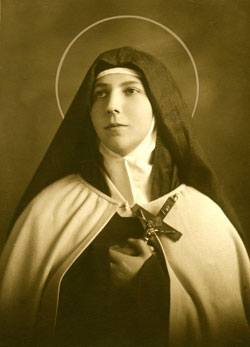 Speaking of the virtue of humility, the great Saint Bernard of Clairvaux, said that the practice of humility entailed not being ignorant of your own Greatness. Mary the Mother of God, in her song of praise, praises God for how great God had made her; “My soul magnifies the Lord … all generations will call me blessed … He who is mighty has done great things for me and holy is His name.”
Speaking of the virtue of humility, the great Saint Bernard of Clairvaux, said that the practice of humility entailed not being ignorant of your own Greatness. Mary the Mother of God, in her song of praise, praises God for how great God had made her; “My soul magnifies the Lord … all generations will call me blessed … He who is mighty has done great things for me and holy is His name.”
I think that these words of the Magnificat must have been engrained in the soul of Saint Teresa of Jesus of the Andes. From her earliest years she had a wonderful sense of how God had created her, called her and made her holy.
Juanita Fernandez was born on 13th July 1900 in Santiago, Chile into a family of three boys and two girls. She grew up surrounded by her extended family and attended the local College which was run by the Sisters of the Sacred Heart. She later went to boarding school where she excelled although she was not particularly fond of school.
Her family was like any other family with their differences and failures. But Juanita lived a full and active life. She loved horse-riding and was a champion swimmer. Her family was a truly Christian family, practising their Faith and caring for those around them. Juanita even helped with teaching younger children catechism. A very ordinary life for a young girl! And that is precisely true.
From a very early age Juanita was conscious of a special connection with the Lord. At the time of her First Holy Communion she was able to discern the Lord speaking to her. From this time on she ‘fell in love with Jesus’ and at fourteen years of age she gave herself completely to Him. Soon after, she felt the desire to enter the Carmel in Los Andes as soon as she would be accepted there. The Mother Prioress wrote to her telling her that she had been born a Carmelite.
Juanita’s knowledge and understanding of Carmelite life came solely from her reading of the lives of Saint Teresa of Jesus of Avila, Saint Therese and Saint Elizabeth of the Trinity. She could see in the lives of these Saints that Carmel was a place where she would be in the presence of God, ‘a little bit of heaven’.
But this life would entail suffering and separation. Juanita believed that whatever suffering there would be would be borne by the Lord on the altar waiting for her love. She began to seek silence and solitude so the Lord would be able to speak to her heart. She was receptive to every sign of the Lord’s presence and every sound of the Word of God. This is what drew her to sanctity – being conscious of the Lord’s presence and alert to the Lord’s word.
Her understanding of the Carmelite vocation was that it was one of suffering, of loving and of praying. She found that this was her whole ideal and she embraced it with Joy. Joy pervaded every part of her life from then on.
She became Sister Teresa of Jesus when she entered the noviciate of the Carmel of the Andes. Her Carmelite life was to be short. She died three months short of her twentieth birthday. The reaction to her death among the Carmelites, the media and the public was extraordinary. What caused such amazement? The ordinariness perhaps! This ordinary young woman was what God wanted her to be. This ordinary young woman was alert to the promptings of God in her life. This ordinary young woman was generous, was loving and was joy-filled. This ordinary young woman understood how great she was in the eyes of God and she sang of the Lord’s greatness with her very life.
Saint Teresa of the Andes has been declared a patron of youth. Other patrons of youth come to mind; Saint Maria Goretti, put before youth for her purity of heart: Saint Dominic Savio for his outstanding example to peers: Blessed Carlo Acutis (1991-2006) for his promotion of and devotion to the Blessed Eucharist.
Saint Teresa of the Andes is put before youth today for her joyful love of God and the illustration by her life of how wonderful is God’s creation of His children and how even the lowly are Great in God’s eyes.
A Novena Prayer to Our Lady of Mount Carmel
Welcome to the Carmelite Monastery of the Immaculate Conception
Roebuck, Dublin 14 D14 T1H9
We are a community of Carmelite Sisters called by God, to live a life of prayer for the Church and for the world.
Our Rule tells us to ‘meditate day and night on the law of the Lord’. In other words to ponder the scriptures as we go about our daily tasks.
The heart of our day is the celebration of the Eucharist and we say the full Divine Office. We also spend two hours in personal prayer each day, one in the morning and one in the evening.
We hope that you enjoy your visit to our website and that you find reason to return soon.
